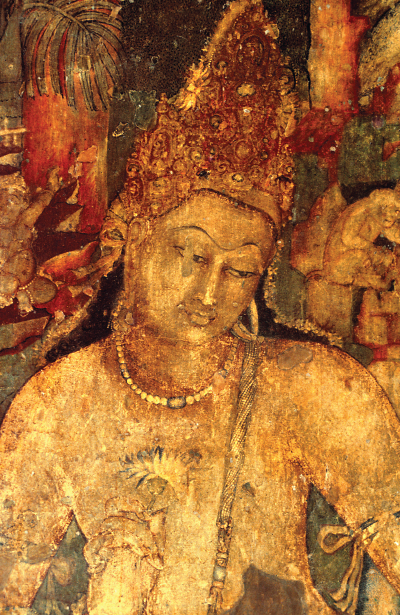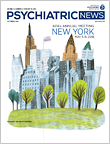The mysteries of science and those of the minds of great artists, old and new, are available for exploring in abundance at New York’s renowned museums during APA’s Annual Meeting this May.
At the Metropolitan Museum of Art, named the best museum in the world by readers of Trip Advisor for the third year in a row, there will be several diverse exhibits to challenge you.
One guaranteed to be extremely popular is “Private Parks, Public Gardens: From Paris to Provence,” which documents French painters’ passion for depicting landscapes during the 19th century. A major spur to this obsession was the arrival of hundreds of previously unknown plants in the country as well as the results of local gardeners’ hybridization of local plants. The important role played by parks and gardens in French life in the 1800s and beyond is documented in works by artists extending from Corot to Matisse, many of whom were gardeners themselves.
As the Met notes, “From paintings by the Impressionists to photographs of the era and vases made to display lush bouquets, this presentation of some 150 works will provide a fresh, multisided perspective on best-known and hidden treasures housed in a museum that took root in a park: namely, New York’s Central Park, which was designed in the spirit of Parisian public parks of the same period.”
Never limited by geography, the Met will shift hemispheres for another upcoming exhibition, “Golden Kingdoms: Luxury and Legacy in the Ancient Americas.” The museum catalogue says, “This landmark exhibition of luxury arts of the Incas, the Aztecs, and their predecessors will trace the emergence and florescence of gold working in the ancient Americas, from its earliest appearance in the Andes to its later developments farther north in Central America and Mexico.” Unlike in some other of the world’s regions, in the ancient Americas metalworking was developed for use in ritual and religion rather than as tools, weapons, or currency.
The luxury shown in this landmark exhibition is not limited to gold and silver, however; also shown is how jade, shells, and feathers were incorporated and often treasured more than those now-precious metals were. The 300-plus pieces in the exhibition “will focus on specific places and times—crucibles of innovation, moments of exceptional achievement in the arts—to explore how materials were selected and transformed, imbued with meaning, and deployed in the most important rituals of their time.”
Another of New York’s famed museums, this one located in midtown, near many of the Annual Meeting hotels, is certainly one of the best places in the world to trace the arc of contemporary painting, sculpture, and decorative arts over the last century or so. The Museum of Modern Art, commonly referred to as MoMA, will be highlighting modern art in Brazil, especially early in the 20th century, with a focus on the art of Tarsila do Amaral, an innovator of modernism in Latin America. This exhibition of more than 130 works, the first in this country devoted exclusively to her art, concentrates on her early Parisian works from the 1920s and “the emblematic modernist paintings produced in Brazil, ending with her large-scale, socially driven works of the early 1930s.” She traveled back and forth between France and Brazil and “ultimately arrived at her signature painterly style of synthetic lines and sensuous volumes depicting landscapes and vernacular scenes in a rich color palette.”
MoMA will also delve into a very different form of modern art, this time in the exhibition “Being: New Photography 2018.” This exhibition, organized in conjunction with the Art Institute of Chicago, “responds to diverse lived experiences and circumstances through a range of issues and tactics, including interrogations of traditional modes of photographic portraiture, the use of surrogates or masks as replacements for the body, tensions between privacy and exposure, formations of community or social relations, and the agency of the sitter and of the artist. … Since its earliest manifestations,” the museum explains, “photography has been widely seen as a means by which to capture an exact likeness of a person; the artists featured in [this show] mine or upset this rich history as they explore photographic representations of personhood today, when rights of representation are contested for many individuals.” The museum will display the works of both experienced and newer photographers.
Who doesn’t love a huge new dinosaur? And one of the most impressive ones ever uncovered has taken up residence in the already incredible fossil halls of the American Museum of Natural History. The titanosaur was so enormous that the cast of its remains on view at the museum cannot fit within the 122-foot confines of the huge gallery. To accommodate it, curators had to position its head and neck outside the gallery, as if they’re pointing the way to the nearby elevator banks.
The discovery of the species is so recent that for a year and a half after the museum installed the exhibit in January 2016, it had to go nameless. Finally, last August, it was christened Patagotitan mayorum to signify that it was discovered in the Patagonia region of Argentina, where it moved its 70-ton bulk through the forests approximately 95 million to 100 million years ago, and that it was found on the ranch of the Mayo family. It is one of the largest dinosaurs ever uncovered.
Another recent exhibit should have particular appeal to the medically inclined. “Inside You” takes an ecosystem rather than individual perspective on the human body. The exhibit examines how science has revolutionized the way we view human health through “microbiome” research, reflecting the knowledge that our bodies house about 100 trillion bacteria plus innumerable viruses and fungi, which together “outnumber the genes in human DNA by more than 100 to one.” The ways in which microbes aid digestion, influence the immune system, and fight their harmful cousins will be illustrated through engaging graphics. ■



